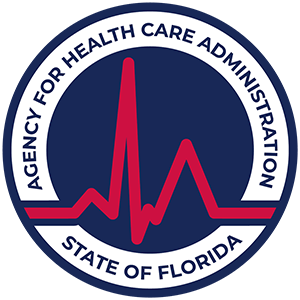Teen Attraction to K Drug Abuse
Explore the teen attraction to K2 drug abuse, its risks, warning signs, and effective prevention strategies.

Understanding Synthetic Drugs
Synthetic drugs are an emerging category of substances that pose significant risks, particularly to adolescents. Gaining an understanding of these drugs is important for awareness and prevention.
What are Synthetic Drugs?
Synthetic drugs are man-made substances designed to mimic the effects of natural drugs. One of the most common types of synthetic drugs is synthetic cannabinoids, which are often referred to as K2 or Spice. These substances are made by spraying human-made mind-altering chemicals on dried plant material, or they can be sold as liquids to be vaporized and inhaled using e-cigarettes [1].
Synthetic cannabinoids can affect the brain much more powerfully than traditional marijuana. The unpredictability of these drugs can lead to dangerous health repercussions, especially among teenagers who are still developing both physically and mentally. Recent statistics indicate a notable rise in substance use among youths, with 2.08 million, or 8.33%, of 12- to 17-year-olds reporting drug use within the past month [2].
Substance TypePrevalence among Teens (% of high school seniors)Synthetic MarijuanaNearly 15%Overall Drug Use8.33%
Dangers of Synthetic Cannabinoids
The dangers associated with synthetic cannabinoids are significant and multifaceted. Unlike traditional marijuana, these synthetic substances can produce more intense and less predictable effects. Research indicates that the chemicals within synthetic marijuana bond more strongly to the brain's cell receptors, which can heighten the potential for adverse reactions [3].
The health risks include but are not limited to severe anxiety, agitation, hallucinations, and even life-threatening medical emergencies. In 2010, over 11,000 young people incurred emergency medical care after abusing synthetic marijuana, highlighting its dangerous nature [4].
Teens often face multiple pressures, including mental health issues, trauma, and social influences that may push them toward substance use. Given these risks, it is crucial to focus on factors influencing drug use and implement prevention programs targeting at-risk youth.
K2 Drug Abuse Facts
Rise of K2 Use Among Teens
The phenomenon of teen attraction to K2 drug abuse has been escalating in recent years. K2, also known as synthetic marijuana or Spice, is a man-made mind-altering substance that can have severe consequences for young users. Nearly 15% of high school seniors have reported having abused synthetic marijuana at some point in their lives. Notably, in the year 2010, over 11,000 young individuals sought emergency medical attention due to complications related to synthetic marijuana use.
The use of K2 is more prevalent among male adolescents, with approximately 14% of high school boys and around 8% of high school girls believed to have engaged in this behavior. The increasing accessibility of these substances, especially through online sales and head shops, contributes to this alarming trend.
DemographicPercentage of High School UsersHigh School Boys14%High School Girls8%Overall Seniors15%
Health Risks of K2 Abuse
The health risks associated with K2 abuse are substantial and can be more severe than those associated with traditional marijuana. Synthetic cannabinoids affect the brain in unpredictable ways, often leading to dangerous health effects, particularly in adolescents whose brains are still developing. The National Institute on Drug Abuse notes that K2 is linked to severe health consequences, including addiction and various psychiatric conditions.
Youth who abuse substances like K2 are at a notably higher risk for mental health issues, including depression, conduct problems, personality disorders, and suicidal tendencies [5]. K2 can interfere with short-term memory, learning, and psychomotor skills, impacting academic performance and overall well-being.
Furthermore, synthetic cannabinoids have been linked to a range of alarming physical health effects such as:
For individuals concerned about the implications of K2 and other substance abuse, understanding what is drug abuse? and recognizing the associated risks is crucial.
Factors Influencing Drug Abuse
Understanding the factors that contribute to drug abuse is crucial in addressing the teen attraction to K2 drug use. Many elements can play a significant role, including environmental conditions and the impact of trauma and stress.
Environmental Factors and Substance Use
Environmental influences can significantly impact an individual's likelihood of turning to substances like synthetic marijuana as a coping mechanism. Factors such as chaotic home environments, peer pressure, and exposure to drug use can create a fertile ground for abuse. According to Sonora Behavioral Health, a stressful home life can push teens towards seeking solace in substance use.
Environmental FactorsImpact on Substance UseChaotic home lifeIncreases likelihood of seeking drugs as a coping mechanismPeer pressureEncourages experimentation with drugsAvailability of substancesHigher access leads to increased use
Teens may also explore substance use as a response to underlying issues such as mental health challenges or emotional distress. As indicated by CHOC, adolescents facing pressures during this formative time are particularly susceptible to experimenting with drugs, viewing it as a temporary escape from their problems.
Impact of Trauma and Stress
Trauma and stress can profoundly influence a teen's decision to use drugs. Experiences such as abuse, neglect, or significant life changes can lead to emotional pain that some adolescents try to numb or escape through substances. Teens who lack adequate support to manage their stressors may see drug use as a viable coping strategy.
Factors contributing to the relationship between trauma, stress, and drug use include the following:
Types of Trauma/StressPotential Substance Abuse OutcomesAbuse (physical, emotional, sexual)Increases likelihood of drug use for copingLoss of a loved oneHeightened risk of utilizing substances to manage griefChronic stress (school, social situations)Can lead to increased substance experimentation
Research shows that substance use during early adolescence often occurs in social settings and is typically associated with substances that are easily accessible, like alcohol or tobacco. While some teens may only experiment, others may develop patterns characterized by dependence, making it vital to understand these dynamics to implement effective preventive measures [6].
Understanding the interplay between environmental factors and the impact of trauma can help inform strategies that address the root causes of drug abuse among teens. For further exploration of what influences drug use, consider visiting our article on factors influencing drug use.
Recognizing Drug Abuse Signs
Detecting early indicators of drug abuse, particularly with synthetic substances like K2, is crucial for timely intervention. This section highlights behavioral changes to watch for and early intervention strategies.
Behavioral Changes to Watch For
Parents and guardians should be vigilant for several signs that may suggest their adolescent is struggling with substance use. Common behavioral changes include:
Behavioral ChangeDescriptionChanges in MoodUnexplained mood swings, irritability, or anger.Physical AppearanceNeglecting personal hygiene or sudden changes in weight.Secretive BehaviorIncreased secrecy, lying about whereabouts, or being evasive.Energy LevelsUnusually high energy or lethargy, which may indicate substance use.Inappropriate LaughterSudden silliness or laughter in inappropriate situations.Memory and Attention IssuesDifficulty concentrating or frequent forgetfulness.
Parents can identify these behaviors as potential signs of substance abuse, aiming to prevent the progression from use to addiction [2].
Early Intervention Strategies
Intervention can play a pivotal role in addressing substance use before it escalates. Some effective strategies include:
Statistics indicate that nearly 15% of all high school seniors have abused synthetic marijuana, highlighting the importance of understanding these signs. In 2010 alone, over 11,000 young individuals required emergency medical care due to synthetic marijuana abuse [4].
Recognizing these signs and taking appropriate early intervention measures can be crucial in guiding teens away from the dangers of substance abuse and toward healthier coping mechanisms.
Treatment and Prevention
Addressing the issue of teen attraction to K2 drug abuse requires effective treatment strategies and proactive prevention measures. Both family-based interventions and school-based prevention programs play a vital role in managing and reducing the incidence of substance abuse among adolescents.
Family-Based Interventions
Family-based interventions aim to strengthen family relationships and improve communication, which is crucial for addressing substance abuse issues. One effective method is Attachment-Based Family Therapy, which focuses on repairing family dynamics and rebuilding trust. This approach also addresses underlying issues such as depression and anxiety that may contribute to a teen's substance use.
Research has shown that family-focused prevention strategies can have a small but persistent impact on reducing alcohol misuse among adolescents. Family support can significantly influence a teen's decision-making and coping strategies concerning drug use.
To effectively engage families in the treatment process, interventions often involve the following components:
ComponentDescriptionOpen CommunicationEncouraging discussions about drug use and its risks within the family.Trust BuildingActivities aimed at repairing and strengthening relationships among family members.Coping StrategiesTeaching families how to handle stress and depression without resorting to substance use.Educational ResourcesProviding materials that educate families on the signs of drug abuse and intervention techniques.
School-Based Prevention Programs
School-based prevention programs are essential for reaching adolescents during critical development phases. Programs that combine social competence and social influence approaches have shown protective effects against drug and cannabis use among teens.
Effective school-based initiatives often include:
Program ElementDescriptionAntidrug InformationProviding factual information about the dangers of drug use, including K2.Refusal Skills TrainingTeaching students strategies to say no to drugs and peer pressure.Self-Management SkillsHelping students develop personal coping mechanisms to handle stress and emotional challenges.Social Skills TrainingEncouraging positive interactions among peers and building a supportive community.
In addition, studies show that school-based programs that encourage parental involvement and peer support tend to yield better outcomes in preventing substance abuse among adolescents. These efforts should focus on early identification, raising awareness, and implementing comprehensive prevention strategies.
By integrating both familial and educational approaches, communities can create a supportive environment that effectively combats the epidemic of K2 drug abuse among teens.
Long-Term Effects of Synthetic Marijuana
The use of synthetic marijuana, particularly K2, can lead to significant long-term effects on brain function and development. Understanding these consequences is vital for addressing the problem of teen attraction to K2 drug abuse.
Neurobiological Alterations
Exposure to synthetic cannabinoids such as JWH-018 during crucial developmental periods, such as adolescence, may result in lasting neurobiological changes. Studies in male mice have shown that this exposure leads to a decrease in prepulse inhibition of the startle reflex, which can indicate heightened anxiety and abnormal sensory processing after short- and long-term exposure.
Further research indicates that adolescent exposure to JWH-018 reduces the number of perineuronal nets (PNNs) in critical regions of the prefrontal cortex, particularly in male subjects. These changes may correlate with an increased risk of developing mental health issues, including psychotic-like symptoms [8].
EffectDescriptionPrepulse Inhibition DecreaseIndicates potential increased anxiety and altered sensory processingReduction in PNNsImpacts overall brain function and increases risk of mental disorders
Activation of microglia and astrocytes in response to synthetic drug exposure has also been observed, signifying a chronic neuroinflammatory reaction within the brain [8]. Such inflammatory responses could further impact cognitive functioning and emotional regulation.
Impact on Brain Development
The consequences of synthetic marijuana use extend to critical aspects of brain development. Changes induced by substances like JWH-018 can hinder normal neural development, potentially resulting in lasting alterations in how the brain processes information and regulates emotion. Studies have pointed out sex-specific effects, meaning that males might experience different long-term consequences compared to females, which is crucial in understanding tailored interventions and treatments.
In the long run, these neurobiological alterations could lead to vulnerabilities in emotional and cognitive health, putting adolescents at risk for mood disorders, anxiety issues, and potentially substance use disorders later in life. Understanding the impact of substances like synthetic marijuana on brain development highlights the necessity for early interventions and educational programs aimed at prevention.
For more insights into factors influencing drug use among teens, visit our section on factors influencing drug use.
References
[2]:
[3]:
[4]:
[5]:
[6]:
[7]:
[8]:














.svg)








